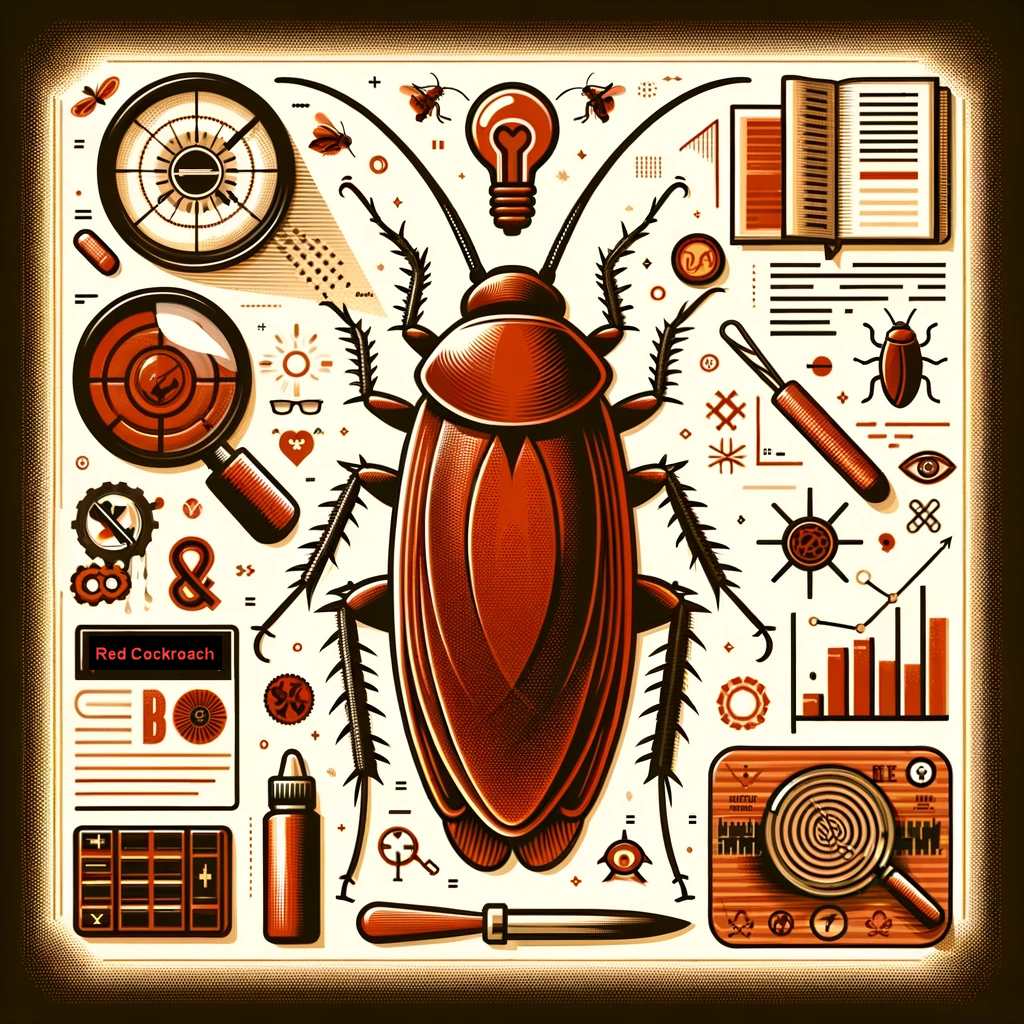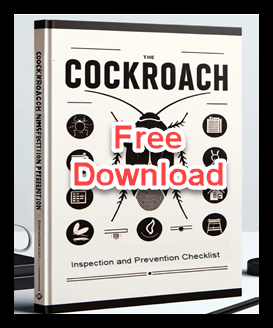Red Cockroaches : Uncovering the Truth
 When we think of cockroaches, a specific image often comes to mind: those resilient, unwelcome house guests that seem to thrive in the face of adversity. However, the mention of “red cockroaches” adds a layer of mystery and intrigue to our understanding of these pervasive creatures. What exactly are red cockroaches? Are they a distinct species, a sign of a peculiar infestation, or merely a myth wrapped in a shell of misinformation?
When we think of cockroaches, a specific image often comes to mind: those resilient, unwelcome house guests that seem to thrive in the face of adversity. However, the mention of “red cockroaches” adds a layer of mystery and intrigue to our understanding of these pervasive creatures. What exactly are red cockroaches? Are they a distinct species, a sign of a peculiar infestation, or merely a myth wrapped in a shell of misinformation?
The color red often signals caution or danger in nature and human societies alike. So, it’s no surprise that the idea of a red cockroach could evoke a heightened sense of alarm or curiosity. Whether you’ve encountered what appears to be a red cockroach in your home, heard tales of their existence, or are simply fascinated by the world of entomology, you’re not alone in seeking answers.
This post aims to shed light on the truth behind red cockroaches. We’ll explore their identification, address common concerns about infestations, examine any unique health risks they may pose, and provide practical advice on managing these pests. By separating fact from fiction, we hope to demystify the concept of red cockroaches and arm you with knowledge to tackle any cockroach-related challenges with confidence.
Join us as we delve into the world of red cockroaches, uncovering the reality behind their colorful designation and what it means for homeowners and insect enthusiasts alike.
Identification: What Are Red Cockroaches?
The term “red cockroaches” might conjure images of brightly colored insects scurrying across your floor, but the reality is a bit more nuanced. In the vast world of entomology, cockroaches come in a range of colors, from the common brown and black to more unusual shades. While truly red cockroaches are rare, certain species exhibit reddish hues that might lead to their being described as “red.” Understanding these species is crucial in correctly identifying the cockroaches you might encounter.
Common Species with Reddish Hues
American Cockroach (Periplaneta americana): Often mistaken for being red, the American cockroach is actually more accurately described as reddish-brown. It is one of the largest species of common cockroaches found in homes and is known for its fast-moving nature. The nymphs (juveniles) of this species can also appear to have a deeper red color as they mature.
German Cockroach (Blattella germanica): Smaller than the American cockroach, the German cockroach’s nymphs have a darker color that might appear reddish under certain lighting conditions. As they grow, their color lightens to a more traditional tan or light brown, but the initial darker phase can lead to reports of “red cockroaches.”
Misidentification and Myths
It’s essential to note that lighting, environmental conditions, and the observer’s perception can all influence the perceived color of a cockroach. Additionally, myths and misinformation can lead to exaggerated descriptions of cockroach colors. True red cockroaches, in the sense of a vibrant, primary red color, do not commonly exist in nature.
The Importance of Accurate Identification
Accurately identifying the species of cockroach you’re dealing with is crucial for several reasons. Different species have different behaviors, habitats, and control strategies. For example, the American cockroach prefers damp areas and can often be found in basements and sewers, while the German cockroach is more likely to be found in kitchens and bathrooms. Knowing which species you’re dealing with helps tailor pest control efforts more effectively.
Infestation Concerns: Are Red Cockroaches Different?
The sighting of a cockroach, regardless of its color, can be a cause for alarm due to the potential health risks and the idea of an infestation. When it comes to cockroaches with a reddish hue, many wonder if these particular sightings should warrant additional concern. Here, we delve into whether red cockroaches differ from their more common counterparts in terms of infestation concerns.
Similarities Across Species
First and foremost, it’s important to understand that the basic behaviors and infestation patterns of cockroaches are more influenced by their species than their color. Whether a cockroach appears reddish-brown or another shade, its tendencies for seeking food, water, and shelter within human environments remain consistent. Thus, the fundamental concerns regarding cockroach infestations apply universally:
- Health Risks: All cockroaches, irrespective of color, can carry pathogens that may contaminate food and surfaces, leading to diseases.
- Allergies and Asthma: The presence of cockroaches can exacerbate allergies and asthma for some individuals, particularly through their droppings, shed skins, and saliva.
Unique Concerns
While the color of a cockroach might not significantly impact the nature of an infestation, certain species known for reddish hues, like the American cockroach, are larger and might be more intimidating to encounter. Additionally, the rapid reproduction rate of species such as the German cockroach means that even a few individuals can quickly lead to a larger infestation if not addressed.
Recognizing Signs of Infestation
Independent of color, recognizing the signs of a cockroach infestation is crucial for timely intervention. These signs include:
- Seeing Live or Dead Cockroaches: Spotting cockroaches during the day can indicate a large population, as they are typically nocturnal.
- Droppings: Small, pepper-like droppings near food sources or in corners can signal their presence.
- Egg Cases (Oothecae): Finding egg cases, which can contain numerous eggs, suggests a breeding population.
Proactive Measures
Understanding that the threat posed by cockroaches is not color-dependent emphasizes the importance of proactive pest control measures. Regular cleaning, sealing entry points, and proper food storage are critical steps in preventing infestations of any cockroach species.
Health Risks: Should You Be Worried?
The mere mention of cockroaches often conjures concerns about health risks, given their reputation for thriving in unsanitary conditions and potentially spreading diseases. When it comes to red cockroaches—or more accurately, cockroaches with reddish-brown hues—the question arises: do they pose any unique health risks compared to their counterparts? Let’s examine the health implications associated with cockroach infestations.
General Health Risks Posed by Cockroaches
Cockroaches, irrespective of their color, are known carriers of various pathogens, including bacteria, parasites, and viruses. These pests can contaminate food, cooking utensils, and surfaces with these pathogens, potentially leading to food poisoning, diarrhea, and other illnesses. Moreover, cockroaches are also linked to allergic reactions and asthma, particularly in sensitive individuals, due to the allergens found in their droppings, shed skins, and saliva.
No Color-Specific Risks
It’s important to clarify that there are no known health risks unique to cockroaches with a reddish hue. The color of a cockroach does not influence its ability to carry and spread pathogens. The primary concerns for human health stem from their behaviors—such as their feeding and nesting habits—rather than their physical appearance.
Preventing Health Issues
Preventing cockroach-related health risks involves a proactive approach to pest management and hygiene. Here are some key strategies:
- Maintain Cleanliness: Regularly clean floors, counters, and hidden spaces where cockroaches may find food remnants.
- Store Food Properly: Keep food in sealed containers to prevent contamination.
- Manage Waste: Dispose of garbage regularly and use sealed bins to deter cockroaches.
- Address Moisture: Fix leaky faucets and pipes and use dehumidifiers in damp areas to make your home less inviting to cockroaches.
Professional Assessment and Intervention
In cases of significant infestation, consulting with pest control professionals can provide a targeted approach to mitigating health risks. Professionals can assess the situation and recommend strategies to eliminate cockroaches and prevent future infestations effectively.
Pest Control: Managing Red Cockroaches
Discovering cockroaches in your home can be unsettling, regardless of their color. When it comes to managing cockroaches that appear reddish, understanding effective pest control strategies is key. Here, we explore how to manage and prevent infestations of these so-called “red cockroaches,” emphasizing that successful control measures apply broadly across various cockroach species.
Integrated Pest Management (IPM)
Integrated Pest Management (IPM) is a comprehensive approach that combines biological, cultural, physical, and chemical methods to manage pest populations effectively and sustainably. Applying IPM principles can help you address cockroach infestations in a manner that minimizes risks to human health, property, and the environment.
DIY Prevention and Control Tips
Effective cockroach management starts with prevention. Here are some DIY tips that can help keep your home cockroach-free:
- Seal Entry Points: Inspect your home for cracks and crevices, especially around doors, windows, and utility pipes, and seal them to prevent cockroach entry.
- Reduce Food Sources: Keep your kitchen clean, store food in airtight containers, and avoid leaving pet food out overnight.
- Eliminate Water Sources: Repair leaky pipes and faucets and eliminate standing water to reduce cockroach attraction.
- Declutter: Reduce clutter in your home to minimize hiding spots for cockroaches.
Chemical Controls
While non-chemical methods are preferred for their safety and sustainability, chemical controls can be necessary in cases of severe infestation:
- Baits: Cockroach baits can be effective in controlling populations by targeting the entire colony.
- Insecticides: Use insecticides as a last resort and choose products specifically designed for cockroach control. Always follow the manufacturer’s instructions to ensure safe use.
Professional Pest Control
When DIY methods are insufficient to control the infestation, it’s time to call in professional pest control services. Professionals can provide a comprehensive assessment and deploy a range of strategies tailored to your specific situation, ensuring the effective elimination of cockroaches from your home.
Understanding the Limitations
It’s important to recognize that managing cockroach infestations, especially in urban environments, can be challenging. Consistency in prevention and control efforts is key. Furthermore, while the focus here is on “red cockroaches,” the principles of cockroach management apply universally, regardless of the color or species of the cockroach.
Curiosity and Misinformation: Separating Fact from Fiction
In the digital age, where information is plentiful but not always accurate, myths about red cockroaches have proliferated, sparking unnecessary alarm and curiosity. It’s crucial to separate fact from fiction to approach the issue of cockroach control with clarity and effectiveness.
Debunking Myths About Red Cockroaches
Myth: Red cockroaches are a dangerous new species. Fact: There is no distinct species known as “red cockroaches.” The reddish-brown color observed in certain cockroaches, like the American cockroach, is typical of many species and does not indicate a new or more dangerous variety.
Myth: The color red in cockroaches signifies toxicity or aggression. Fact: The coloration of cockroaches has no correlation with toxicity or behavior. The perceived threat from cockroaches stems from their potential to spread pathogens and cause allergic reactions, not their color.
Myth: Red cockroaches are resistant to all forms of pest control. Fact: While some cockroach species have developed resistance to specific pesticides, this is not related to their color. Effective pest management requires a combination of strategies tailored to the specific species and situation.
Understanding the Role of Misinformation
Misinformation about red cockroaches can lead to unnecessary fear and the misuse of pest control methods. It’s important to rely on credible sources and professional advice when dealing with cockroach infestations. Educating yourself and others about the realities of cockroach behavior and control can help demystify these creatures and promote more effective, informed approaches to pest management.
Encouraging Responsible Pest Control
Recognizing the myths surrounding red cockroaches allows homeowners and residents to approach pest control more responsibly. Rather than resorting to drastic measures based on misinformation, it encourages the adoption of safe, sustainable practices that address the root causes of infestations.
Conclusion: Embracing Knowledge for Effective Cockroach Management
The journey through the world of red cockroaches has unveiled much about these misunderstood creatures and the myths that surround them. By separating fact from fiction, we’ve discovered that the key to managing cockroach infestations lies not in the color of these pests but in understanding their behaviors, habitats, and the effective strategies for their control.
Cockroaches, whether reddish-brown or any other hue, pose similar challenges and health risks in our homes. The myths surrounding red cockroaches serve as a reminder of the importance of basing our pest control efforts on scientific evidence and proven practices rather than rumors or misconceptions.
Effective cockroach management requires a multifaceted approach, incorporating cleanliness, habitat modification, and, when necessary, chemical interventions. Integrated Pest Management (IPM) stands out as a sustainable strategy that minimizes risks to humans and the environment, promoting a balanced coexistence with the natural world.
As we conclude, let’s remember that knowledge is our most powerful tool in the fight against cockroach infestations. By educating ourselves and others, we can dispel myths, reduce unnecessary fears, and adopt more effective, responsible pest control measures. Whether facing red cockroaches or any other pests, an informed approach is the key to creating healthier, pest-free environments for ourselves and future generations.
- The Life Span of a Cockroach
- Do Cockroaches Eat Clothes?
- Do Cockroaches Have Teeth?
- Shrimps and Cockroaches
- Will Sleeping with the Light On Keep Cockroaches Away?
- How to get roaches out of your car overnight
- Do Cockroaches Feel Pain?
- How Many Legs Do Cockroaches Have?
- Comparing Cockroach Eggs Size for Different Types of Cockroaches
- Identifying a Cockroach Bite on the Lips or Face
- Black Water Bug Identification and Control
- Why Do Water Bugs Come Out At Night?
- What Does Roach Rash Look Like?
- Can Cockroaches Bite Your Eyelid?
- Can Cockroaches Live in Your Balls?
- How did cockroaches get their name?
- Why Do Cockroaches Shed Their Skin?
- What Smell do Palmetto Bugs Hate?
- Baby Palmetto Bug: Identification and Control
- Cockroach Eggs vs Poop: How to Tell the Difference
- How to Get Rid of Water Bugs
- How Long Can a Cockroach Live Without Air?
- The Lifecycle of the German Cockroach: From Egg to Adult
- Do Mice Eat Roaches
- Wood Roach vs. Cockroach

